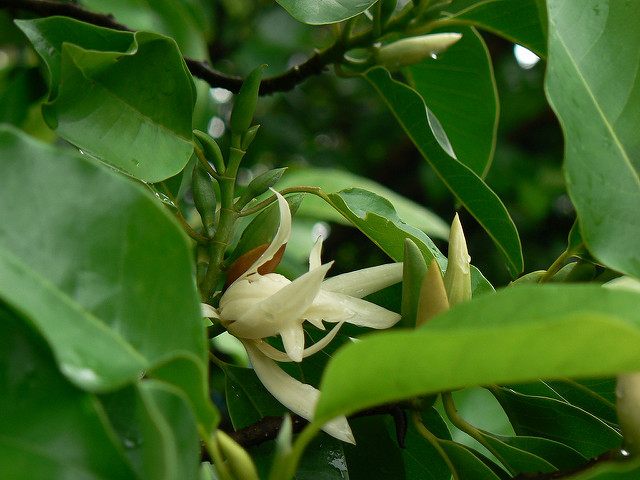Eastern China Is a ‘Museum’ of Flowering Plants
New research digs into the evolutionary history of these plants and finds an impressive diversity across the country.

China, as many have noted, is a very large piece of contiguous land, which accounts for just under 7 percent of the world’s total land area. It is slightly larger than Brazil and slightly smaller than the United States. Yet, as a new paper, published in Nature, notes, China is home to many more species of vascular plant than the U.S.—30,000 in all, compared to the 17,000 or so in the United States.
When and how did all these many plants evolve in China? Since the 1990s, the team behind the new paper, led by researchers at the Chinese Academy of Scientists, have been collecting specimens and DNA samples from across the country, pulled together into a DNA bank. In the new study, they used that data to reconstruct the evolutionary history of vascular plants and found the story for eastern and western China looked very different.
Overall, the researchers found, 66 percent of China’s plant genera—the taxonomic category just above species—originated around 23 million years ago. But those older plant lineages clustered in the east, where the ancient origins of the plants has created a “floristic museum,” the researchers write, where species diversity dating back millions of years has been preserved. In North America and Europe, glaciers swept down from further north during the ice age that started 2.58 million years ago, killing off ancient plants in those areas. But in China, plants escaped that fate and continued to thrive, while new genera and species evolved in the same regions.

In western China, though, the deep history of plants is different. The genera of plants here, the researchers found, started diverging closer to 19 million years ago. The geologic conditions here, where continental plates crushed together, created new climates and habitats, leading to a sprouting of new types of life and a younger diversity of plants.
Compared even to U.S., with its mountains, deserts, and plains, China has a varied topology that creates new pressures and sparks to evolution, which contributes to the massive diversity of plant species. Even so, there are a few provinces in the east, including Yunnan and the rapidly developing Guangdong, that the researchers identified as the areas of greatest genetic diversity for flowering plants. In these same places, though, plant life is under the greatest threat from development pressures, and the natural parks and reserves are fragmented.
By showing the incredible scope and depth of the history of plant life, the researchers hope to help conservation efforts preserve the natural collections of flowers growing here. After all, a museum is only as good as its holdings.





















Follow us on Twitter to get the latest on the world's hidden wonders.
Like us on Facebook to get the latest on the world's hidden wonders.
Follow us on Twitter Like us on Facebook